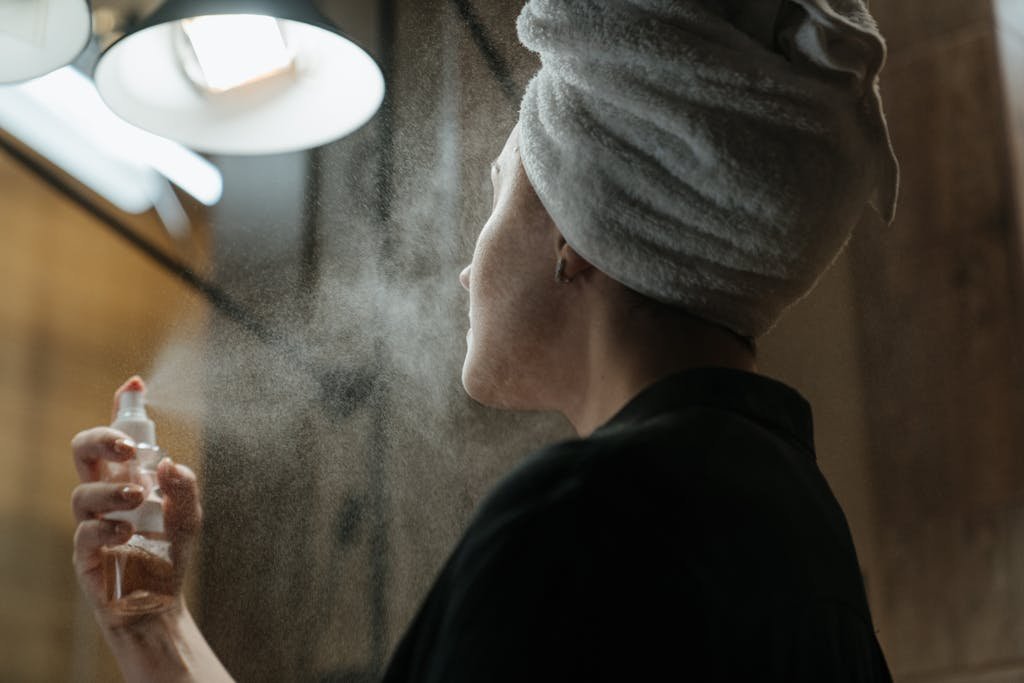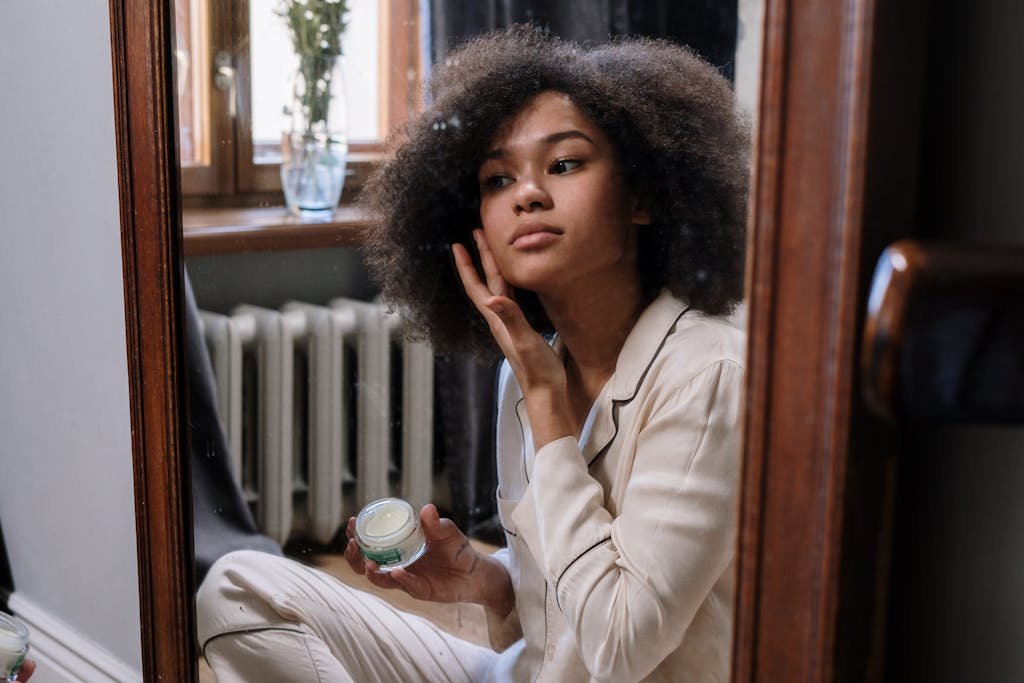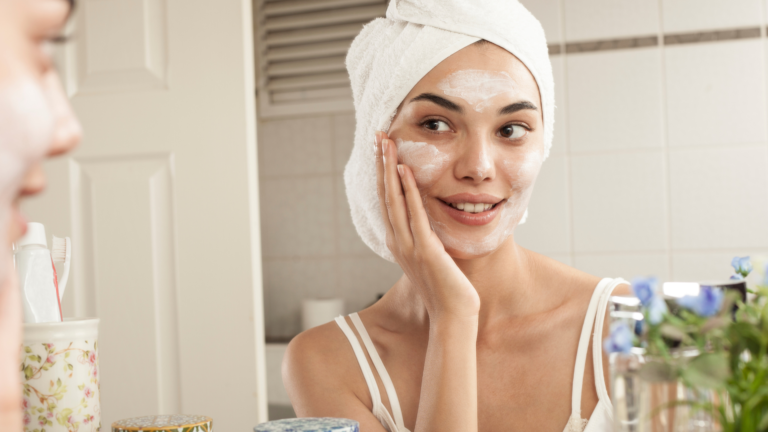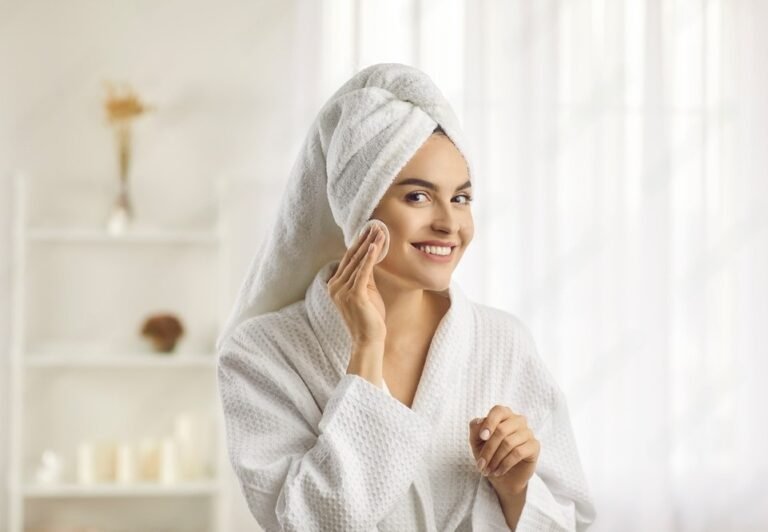Unveiling the Science and Benefits of LED Light Therapy At-Home Devices
This post may contain affiliate links. That means that if you click on a link and purchase something I recommend, I will receive a small commission at no extra cost to you. As an Amazon Associate, I earn from qualifying purchases. This helps keep my website up and running and is very appreciated. Thank you for your support! Disclaimer
In Today’s article , we are going to talk today about at-home LED devices. So, without further ado, let’s jump in.
If you don’t have time to read this post right now, why not save it for later?
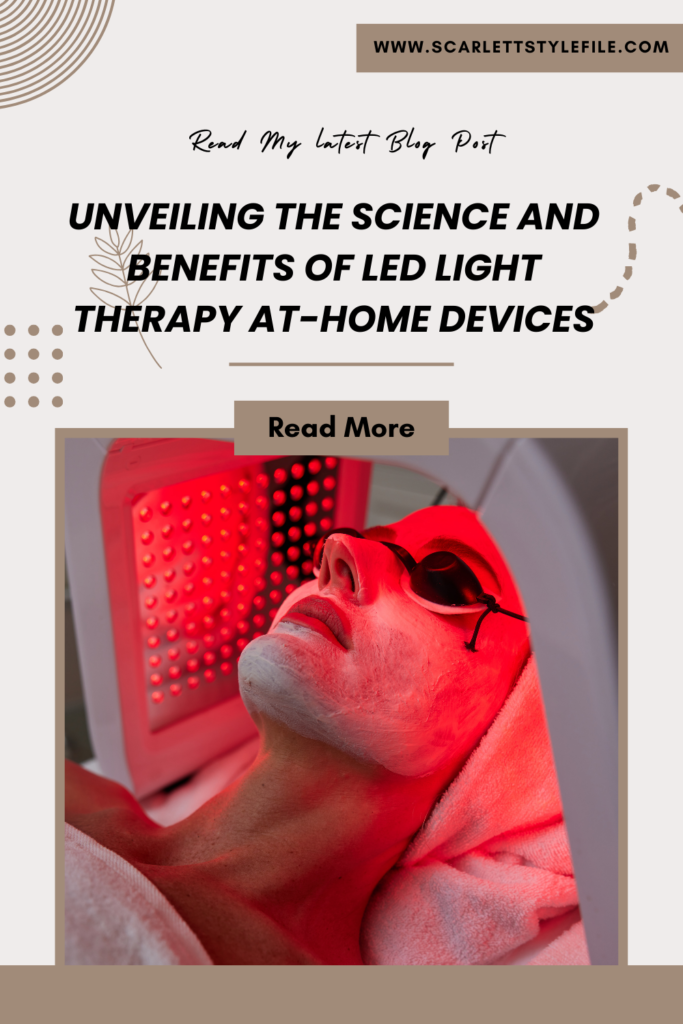
Unveiling the Science and Benefits of LED Light Therapy At-Home Devices
what is LED + how does it work

What does an LED device do to your skin? It’s a type of light treatment called photobiomodulation. This means it changes your biology, your cells, using light. When you break down the words, they’re not as scary and are easier to understand.
So, what’s photobiomodulation? And what exactly is an LED? LED stands for light-emitting diodes. They’re different from lasers because lasers are like laser beams. An LED light can be broken down by wavelength like a laser, but it’s not as focused as a laser beam. It spreads out more within a specific wavelength, so it’s not as strong. So, don’t mix them up.
It’s a light source that you put close to or even on your skin to make cells change. How does that happen? The light energy, called photons, is absorbed by a target in the body depending on the light’s wavelength. When the target absorbs the light, it either boosts or slows down a cell process. This lets your cells change and either work better or slow down. This is also called a photochemical change.
How does it work? Well, light energy goes into the mitochondria, which is like the power station of the cell. Once there, it activates the cell. This makes the cell work better. For example, if it’s a fibroblast cell, it can make collagen better. If you use it on your scalp, it can help hair grow better by stimulating hair follicles. Also, it makes the cell use oxygen and nutrients better, and it creates ATP, which is like fuel for cells. This helps cells have more energy to do their job.
LED therapy works like this, and there are studies that prove it works. For instance, it can help wounds heal faster and reduce inflammation. I’ve personally seen people heal burns faster using LED lights. I even used an LED device myself for a burn, and it made a big difference in how quickly it healed. Normally, it takes about three weeks for a burn to heal, but with the LED device, it healed a lot faster. I wish I had pictures to show you, but I didn’t take any.
key factors to look for when choosing a LED Light Therapy device

When you’re checking out LED lights, one important thing to consider is their color. Think about a rainbow—each color represents a different wavelength of light. The visible light spectrum, which is what we can see, goes from about 400 nanometers to around 750 nanometers. Past the red end, you get into near-infrared and then infrared light. So, LED lights, whether they’re blue, green, or red, usually fall within a specific range of wavelengths.
Another thing to think about is irradiance. What’s that? It’s basically how much power is packed into a certain area. It’s like measuring the energy your skin gets from the light, in joules per square centimeter. So, when you’re evaluating LED lights, you want to know about their color and their irradiance. Let’s dive into each of these a bit more.
wavelength
We’re talking about wavelengths here. For an LED device, you need a specific wavelength. Usually, it’s something like 630 nanometers with a margin of 5 nanometers. If it says 630 nanometers with a margin of 30 nanometers, it’s a wider range and not as precise
significance of the LED color
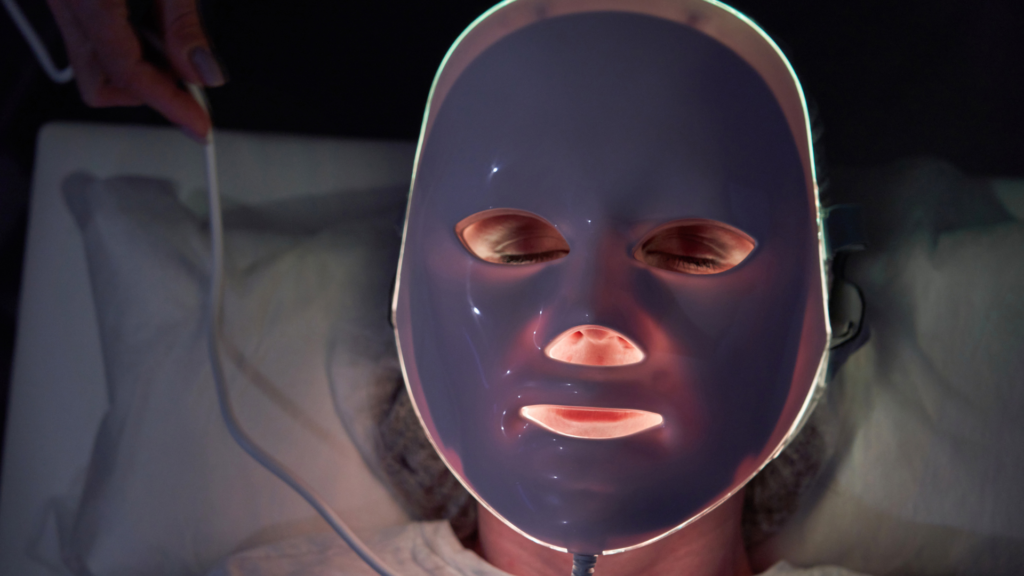
Depending on what you want to achieve, you’ll often find red lights, which are really common, as well as near-infrared lights, and blue lights because they’re good for acne. There’s also this new thing called green light LED, which is pretty cool, but we’re still figuring out how helpful it is for pigmentation. We need more research to be sure about that. But red, near-infrared, and blue lights are the ones we know work well.
Why does the color matter? It’s all about what you’re aiming for. See, different colors can penetrate the skin at different depths. Blue light doesn’t go very deep, red light goes a bit deeper, and near-infrared light goes even deeper than that. So, when it can penetrate deeper, your skin can absorb it better.
For red light therapy, the best absorption happens at around 633 nanometers, and for near-infrared light, it’s around 830 nanometers. We’ve figured out these numbers because they’ve been tested and proven to work.
And this leads me to another question that I oftentimes get if it’s good for a light to have lots of different colors. They think more colors mean it’s better. But actually, having too many colors might weaken the light’s energy. The best lights usually have just three colors: red, blue, and near-infrared. You can mix these colors together in different ways. Otherwise, it’s better to have a light that’s focused on specific colors. It’s important to remember that more isn’t always better, even though we often think it is.
irradiance
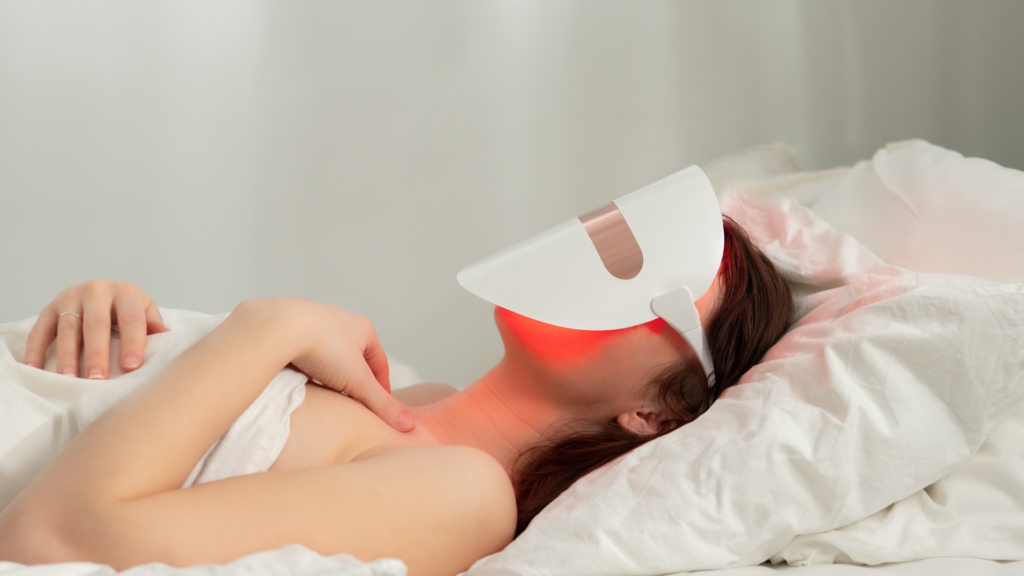
Then we go into the irradiance. The irradiance, like I mentioned, is how intense the light is. We measure it in milliwatts per square centimeter. It tells us how much power is packed into a small area. Studies suggest that it’s best to keep the brightness between 40 and 150 milliwatts per square centimeter. But sticking around 50 milliwatts per square centimeter is safer for your skin.
If you have melasma, overheating your skin can make it worse. The brightness also affects how deeply the light can penetrate your skin and whether it’s absorbed well. If it’s too dim, you’ll need more time for it to work. If it’s too bright, it can harm your skin. So, getting the right brightness, or irradiance, is important.
energy
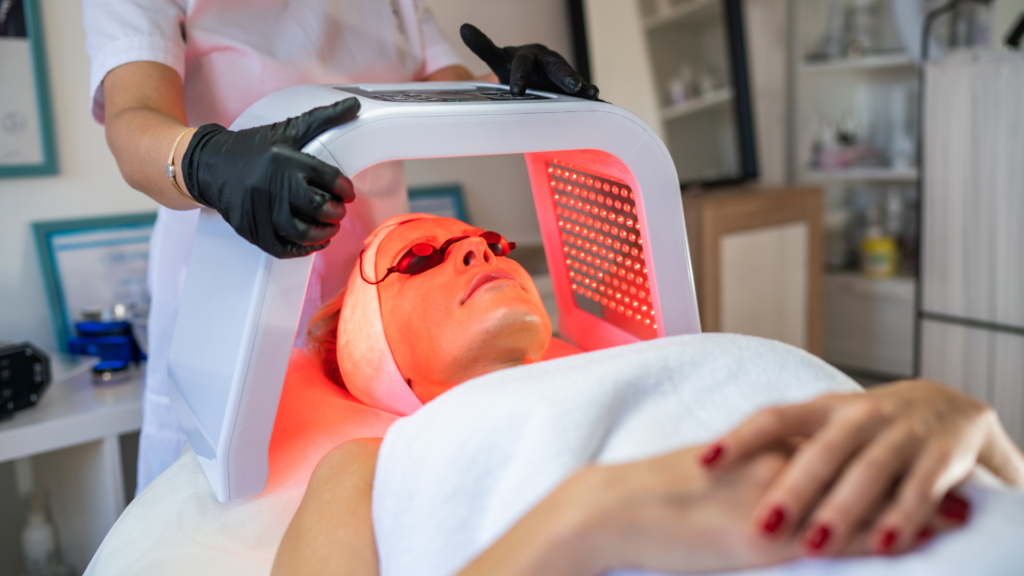
So, the third thing to consider is the energy, or how much power the device delivers to your skin over an area. This is important because it tells you how much light your skin is getting. When you buy LED light gadgets, they’ll suggest you use them for a certain number of times a week and for a specific duration, like 3 minutes or 10 minutes. If they advise longer times, it likely means the light isn’t as strong. The stronger the light, the less time you need it on your skin. Also, how far you hold the device from your skin matters too.
In the past, people thought the more light bulbs, the better. But that’s not true because it’s not just about the number of bulbs, it’s about how strong the light is. So, focus more on the strength of the light rather than the number of bulbs. These are the three main things to consider when choosing an LED device.
how to compare devices when purchasing

How wide or narrow is the energy of the wavelength? It could be plus or minus 5, 10, 15, or 30. Some companies don’t share the irradiance, unfortunately. You might need to email them, reach out on Instagram, or send them a direct message to find out. But the treatment time is usually in the instruction manuals.
Once you know the treatment time and the wavelength, you can roughly calculate the irradiance. Here’s a simple calculation: the dose (joules per centimeter square) equals the irradiance multiplied by the time in seconds the device instructs you to use it, then multiplied by 0.001. This will give you the calculated dose. So, if you have two out of the three units available, you can figure out the third one. If you don’t know the irradiance, by knowing the dose, you can figure it out, and vice versa. These are the three main things to consider when buying a device.
FDA approval of devices

Let’s delve into the FDA for a moment. Having FDA approval for a device doesn’t guarantee its effectiveness. Getting a 510(k) for an at-home device or purchasing an FDA-approved one doesn’t automatically ensure desired outcomes. Essentially, it indicates that the device is deemed safe enough not to pose harm. However, it doesn’t imply that these devices are the pinnacle of legitimacy and efficacy. So, while FDA approval is reassuring in terms of safety, it doesn’t guarantee effectiveness.
If you’re curious about specifics, browsing FDA.gov can often provide device specifications. For instance, if a company doesn’t disclose irradiance levels, checking their 510(k) can reveal the actual device specifications. This is why I obtained irradiance information for many of my purchased devices—they weren’t all readily available.
Now, onto LED lights. A quality LED light, along with appropriate irradiance, shouldn’t generate excess heat. Therefore, if you notice excessive heat from a supposedly LED light device, especially one purchased cheaply on Amazon (no judgment… okay, maybe a little), chances are it’s not up to par. An LED device heating up is a red flag; it should remain cool during operation.
who should avoid LED light devices

People with epilepsy or seizures, pay extra attention. If you have conditions like lupus that make you sensitive to light, be cautious. If you’re taking certain medications like doxycycline for acne and it makes your skin more sensitive to light, be careful too. And of course, if you’re pregnant, better talk to your doctor because we don’t want any pregnancy scares.
Now, about melasma, it’s a bit uncertain. Omnilux mentions on their website that melasma isn’t usually triggered by LED devices and they might even help. But it depends on the device and ensuring it doesn’t get too hot. If it does, don’t use it.
10 best LED light devices in the Market
I recently bought three devices from three different companies. Honestly, they all look pretty similar, and I suspect they were made by the same manufacturer. They have slight differences, like some have a top strap and some don’t, but they all come with a connection cable. These devices from Omnilux, CurrentBody, and Higher Dose all use a combination of red light and near-infrared light. Some were gifts, but I’ll still give you my honest opinion. The goal here isn’t to compare the masks in detail but to explain what at-home LED devices can do for you.
The light devices from Higher Dose, Omnilux, and CurrentBody all look almost identical. They all use the same wavelengths of light—633 nanometers and 830 nanometers—combining red and near-infrared light. They each have a fluence of about 18 joules per square centimeter and an irradiance of 30 milliwatts per square centimeter, so they’re in the right range. The recommended treatment time is around 10 minutes, three to five times a week.
Don’t overdo it to avoid damaging your skin. Near-infrared light targets fibroblasts, improving elasticity, reducing fine lines and wrinkles, enhancing firmness, and aiding muscle relaxation, recovery, and pain relief. So, if you work out a lot or are training for a marathon, near-infrared light can help your muscles heal better.
how to use an LED mask
Here’s how it works: you put it on your face, set the timer for 10 to 20 minutes, and let it sit for about 10 minutes. More time doesn’t always mean better results. This helps stimulate your skin, boosts blood flow, and improves your skin tone. If you have a cut or wound, you can also use it on your body to help it heal faster.
One of my favorites is the Higher Dose mask, which costs $299. I prefer it because it has a top strap, unlike the Omnilux and CurrentBody masks, which only have two side straps. The Higher Dose is also the cheapest of the three. The Omnilux and CurrentBody masks cost around $390.
CurrentBody also offers a mask specifically for the neck. Do you really need a separate neck mask? Not necessarily. You could just use the regular mask and go about your day. The neck mask is more expensive at $469 because it’s more flexible and has a strap that helps treat the skin on your neck. So, these are the masks.


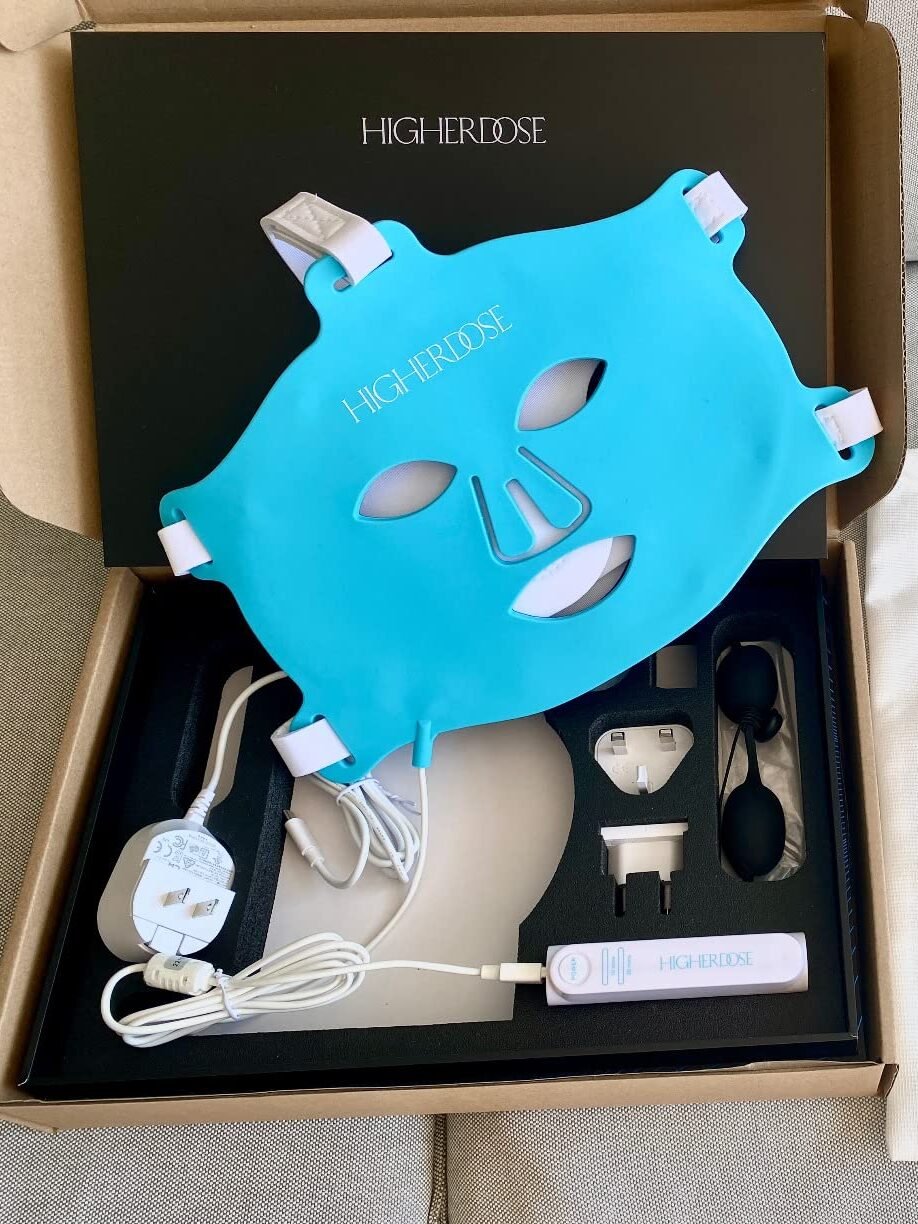
handheld devices
You also have handheld devices from LightStim. There’s one for acne, which uses a mix of blue and red light, and another for wrinkles, mainly using red light LED, possibly with near-infrared too. To use these, you put the device on your skin for three minutes or more, about three to five times a week. It doesn’t hurt because the irradiance is high. For wrinkles and fine lines, use the wrinkle device, but be careful around your eyes. Close your eyes or use the provided goggles because the light is very bright.
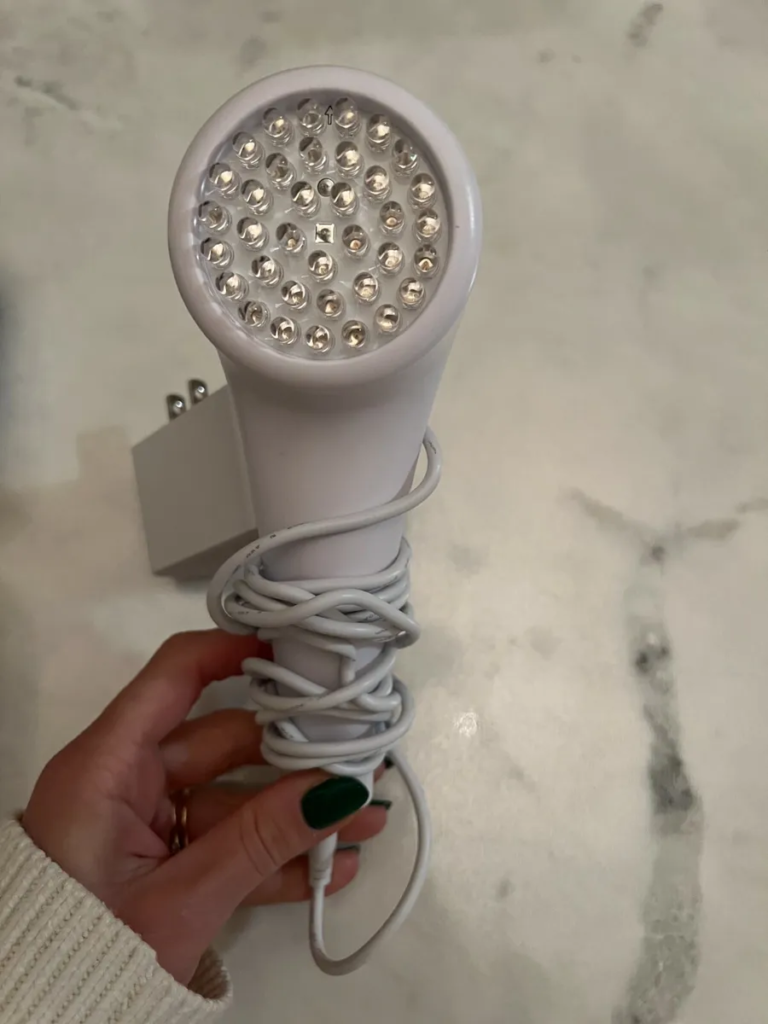
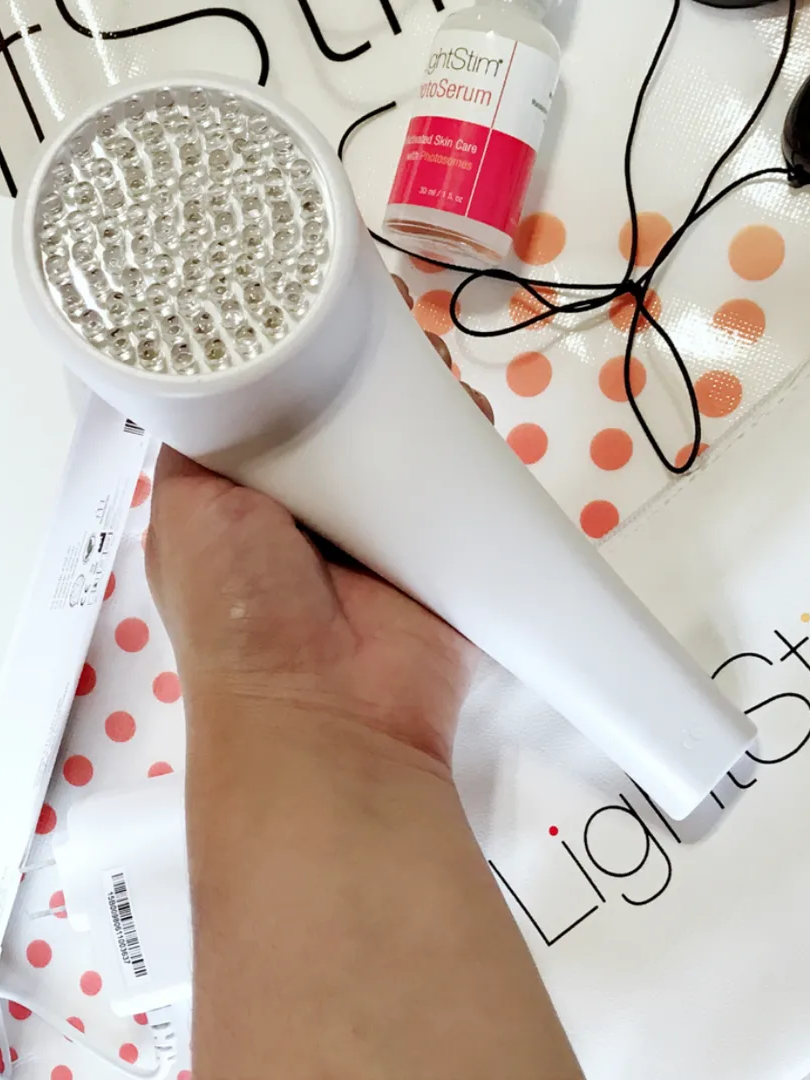
I personally prefer face masks since they free up your hands to text or do other things. But these handheld devices are useful if you just have a few spots and are watching TV. They’re quicker, only taking three minutes compared to the 10 minutes a mask requires. So, both have their pros and cons.
LED device for hair loss
Next, we have LED lights for hair, and this one’s pretty cool. Technically, it’s a laser, not an LED light. You put it on your scalp if you’re losing hair in the front. The red light, at 655 nanometers, helps stimulate hair growth. However, not all hair loss is the same, so you need to know what type you have. It’s a good idea to talk to your dermatologist if you’re experiencing hair loss. This device is easy to use: it beeps after three minutes, then you glide it over your scalp. It’s called HairMax. If you’re dealing with hair loss and don’t want to use Rogaine, take pills, or get a hair transplant, this is something you can try.

portable device
And lastly, we have the Joovv. The Joovv is a pretty big device, and we have two versions: the big one and the small one. I’ll focus on the small one for now. The small one costs about $550, while the big one is $1500. The big one is great for people who want full-body LED treatment, like athletes or those with past injuries.
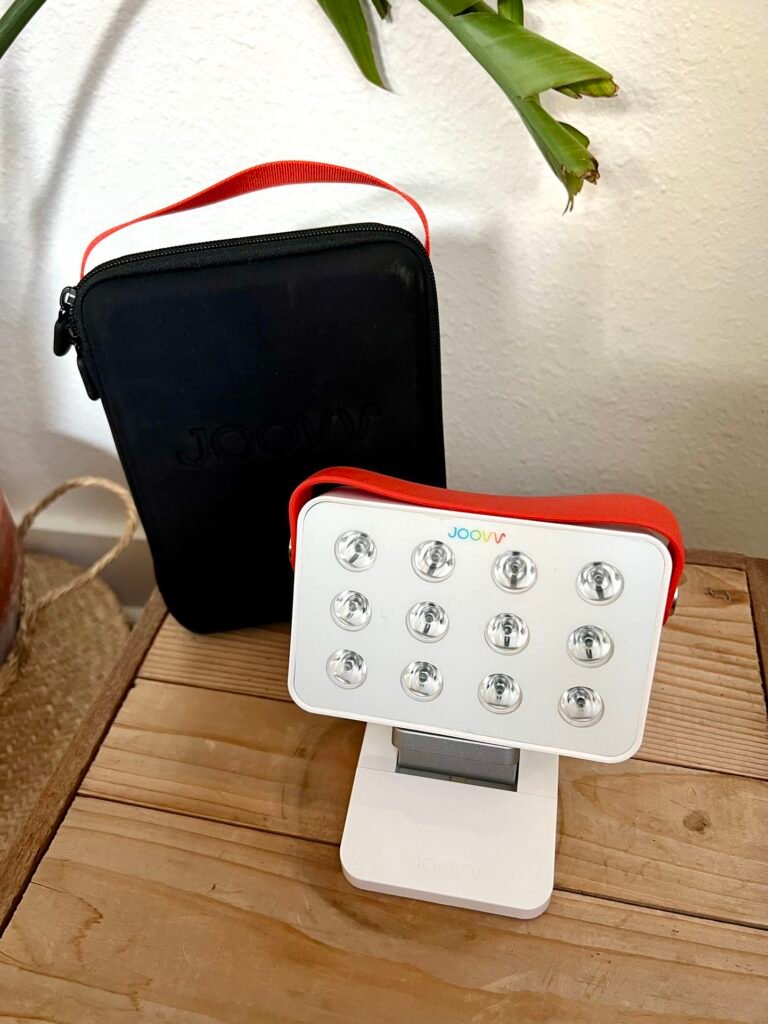
The small one can sit on your desk, but it’s very bright, so you’ll probably need goggles when using it. It’s super bright, but the good thing is, you can take it with you when you travel. Use it on your skin every day or three to five times a week, whatever suits you. It can boost your immune system, make your skin look more vibrant, reduce wrinkles, and improve your overall skin tone. That’s the real benefit of LED lights.
The Bottom Line
So, these devices can be pretty expensive, ranging from $300 to $1500. I’ve even seen some for $8000, but I don’t think they’re any better than the $300 ones you can get on Amazon. So, be careful. Don’t mistake FDA approval for guaranteed results.
And don’t get distracted by the number of light bulbs; more bulbs can just add to the confusion. Focus on the wavelength, the irradiance, and the treatment time, and you should be good to go for great skin.
Feel free to leave any questions or feedback in the comments. I truly value my readers’ input.


